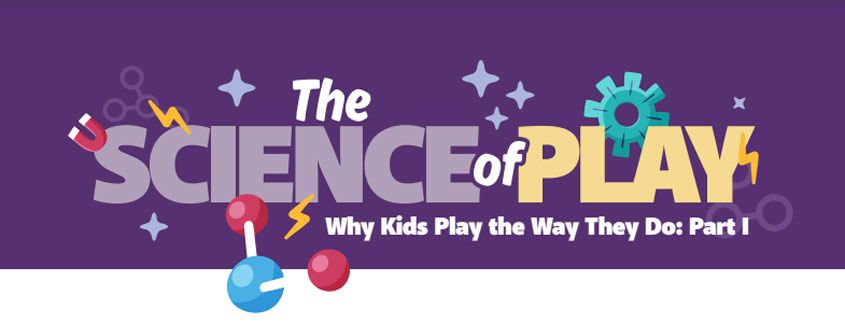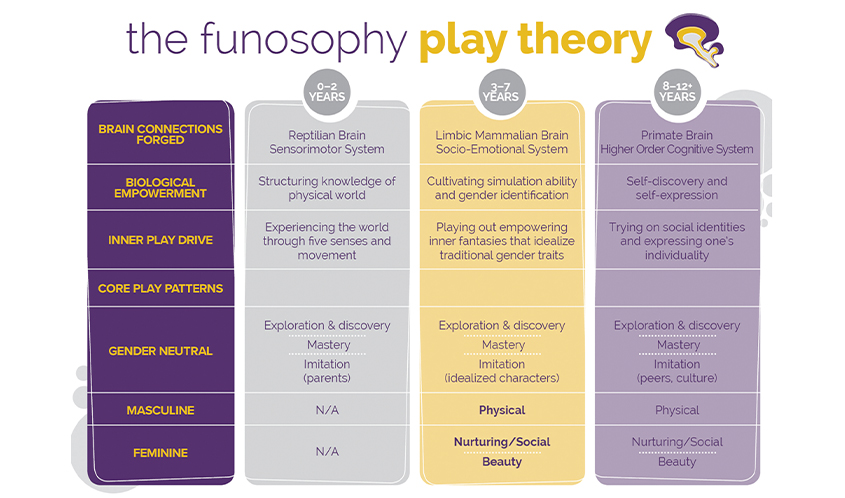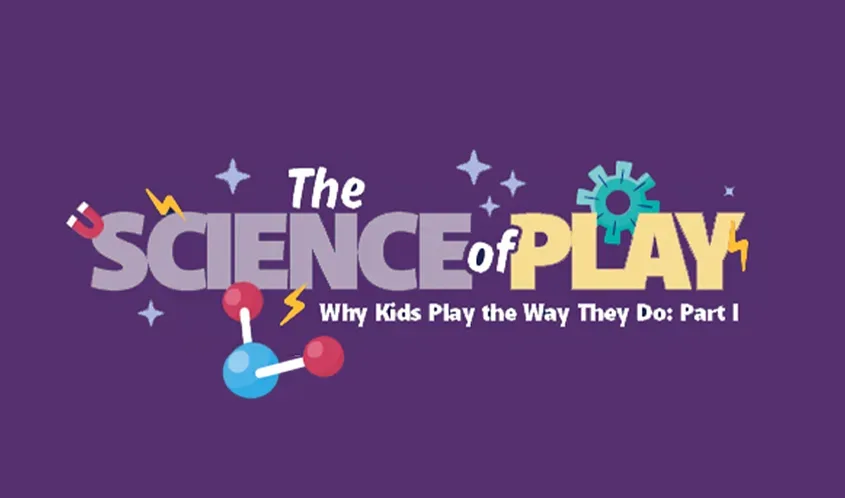
After decades in the toy industry, we veterans have observed patterns in the way kids play, and noted that these core play patterns transcend time, geography, and culture. Successful innovation is a matter of tapping into these stable core play patterns in new ways — not trying to invent new play patterns.
Seeking to understand why these core play patterns exist, I began a journey of exploration and discovery about the nature of play. In this multipart series, I will summarize the big picture insights gained from my foray into the disciplines of anthropology, evolutionary biology, neuroscience, and child development.
Marketplace Observation Reveals Core Play Patterns
- Play patterns are segmented by age: For those of us who have been in the industry for a long time, we see a clear age segmentation naturally emerge that is indisputable. While I will define the age segments using discrete ages, note that every age break is a continuum, with some kids moving through the play stages more quickly and others more slowly.
- There are clear differences in masculine and feminine play patterns: Infants and toddlers enjoy fairly gender-neutral play. At about age 2, gender preferences start becoming apparent; and in the 3-7 age range, these gender-based preferences dominate play. While gender differences will continue to exist, the distinctions are greatest among kids ages 3-7 years. (Note that some kids do not demonstrate stereotypical gender traits, and this natural-given “gender” is a continuum from masculine to feminine. Individuals of all genders can be anywhere on this continuum.)
Play Is Universal and an Inner Biological Drive
Play and playthings (aka toys) are included in a list of approximately 400 “human universals” first published by noted anthropologist Donald E. Brown in 1991. Detailed in a book published by the same name, human universals are concepts, objects, traits, and behaviors that have been documented in every single human culture ever studied. There are no known exceptions across the span of time and geography.

If play is universal, that means there is a biological basis for play versus merely cultural influences. In addition, numerous studies document play behaviors in primates and other mammals, which further reinforces the biological basis of play. In evolutionary theory (the ultimate big picture understanding of all living things), when a trait is as broad scale as play is, scientists conclude that the trait is adaptive. In other words, in some way, play must help us survive and reproduce. But how?
Sifting through mountains of data looking for clues, I found that no scientist had yet cracked this code. However, with access to empirical data from the market (i.e. what sells), I have developed an intriguing theory that both explains and predicts the behavior of the market and is consistent with scientific theory and data.
Funosophy Play Theory
Play is nature’s way of ensuring we learn how to survive, and our inner play drive allows us to wire our brains in a predictable systematic fashion.
Just as animals evolved over eons from simple reptiles to significantly more complex humans on a macro level, on a micro level, our individual brains develop according to the same sequence. Our brains develop from the bottom up throughout childhood, and well into adolescence in a way that mirrors evolution, as illustrated below through the Paul MacLean Triune Brain Model:
- Reptilian: Somatosensory/sensorimotor system — monitoring inner states, sensation (the five senses) anywhere in the body, and initiation of movement impulses.
- Mammalian: Limbic system (“emotional brain”) — socio-emotional system (feelings, motivation, and relationships).
- Primate: Higher-order cognitive system — thinking, conscious memory, symbols, and planning (neo-cortex); inhibition of impulses, or judgment, develops last (prefrontal cortex).
By combining our understanding of core play patterns with insights from neuroscience on brain development, a theoretical model emerges in which each of the three age segments in the play landscape corresponds to the three phases of brain development (see below). This model suggests that play appears to be the primary engine for forging the brain connections we will ultimately need to survive and reproduce. The axiom “Play to Learn” is even more valid than we perhaps realized.

With this insight, we can impact the troubling trend of less time being devoted to unstructured play in kids’ lives. As an industry, we have the opportunity to help well-meaning parents understand just how crucial play is to their kids’ well-being, now and for the rest of their lives.
Further, as we get smarter about aligning our toys with the inner play drives of kids at every age, we will improve the play value of the toys we bring to market. As play value improves, perceived value goes up. Higher perceived value of toys is good for everyone! It’s a virtuous circle all the way around.
To that end, Part II of this series in the next issue of the Toy Book will explore the core play patterns by age and gender, as shown in the Funosophy Play Theory, in greater detail.
This article was originally published in the May 2021 edition of the Toy Book. Click here to read the full issue!


